Northwood Shores divided: Will a 'historic' designation ward off rampant development?
Elbridge Gale came from the Flint Hills of Kansas searching for a land without winter — a place where the landscape was evergreen and a man could forge a future from the dirt.
He landed on the western shores of the Lake Worth Lagoon in the late-1880s, was deeded 160 acres by the government, built a log cabin with driftwood and planted a vast mango grove amid the feral terrain of saw palmetto and cabbage palms north of what is now downtown West Palm Beach.
The homestead would come to be named Mangonia as the carefully cultivated fruit trees and a pioneer community grew.
Today, the roughly 10-block neighborhood that hugs the Intracoastal Waterway is at a crossroads created by the pandemic-induced property frenzy in South Florida that has gobbled up waterfront lots and knocked down old homes for modern new construction.
In Mangonia, now known as Northwood Shores, neighborhood association president and trained urban planner Carl Flick wants the community to become a city-designated historic district as a way to defend the shoreline against steely towers and protect the fragile history of an area that touted the county’s first paved road.
More: Florida real estate boom means big homes on small lots in West Palm Beach neighborhood
But other residents see opportunity in the new-found admiration of the clutch of streets unsullied by high rises. Like 21st-century pioneers, they recoil at the suggestion of more government regulations and are wary of overzealous preservationists that would restrict what they can do with their properties.
“I don’t want to live in a fascist state. I’m really passionate about this,” said Northwood Shores resident and developer Scott Diament, who was recently elected to the neighborhood association board.
Diament is building an 8,000-square-foot contemporary three-story home in the community along North Flagler Drive with a cantilevered design, a pool on every level and a view of Palm Beach. He is a professional showman, producing fine art, antique and jewelry exhibitions across the country as owner of the Palm Beach Show Group — a bon vivant and an admirer of history, but also an entrepreneur.

“The only constant is change,” Diament said. “Trying to hold back change is counterproductive."
The disagreement has led to accusations of clandestine dealings to thwart home demolitions, and of burying information about historic district plans in voluminous newsletters. Veiled threats of lawsuits were levied. And the rules that protect historic districts have been dubbed "un-American" and likened to living under a dictatorship.
Flick said he's become either a savior or bogeyman to his neighbors depending on their preference for historic status.
“It’s gotten a little ugly,” said neighborhood association treasurer Sean Blickle.
Mangoes built a homestead and a community
The city of West Palm Beach was founded in November 1894 as the first incorporated municipality in what was then Dade County. It evolved beside railroad tycoon Henry Flagler’s crafting of Palm Beach into a bastion of winter leisure and wealth.
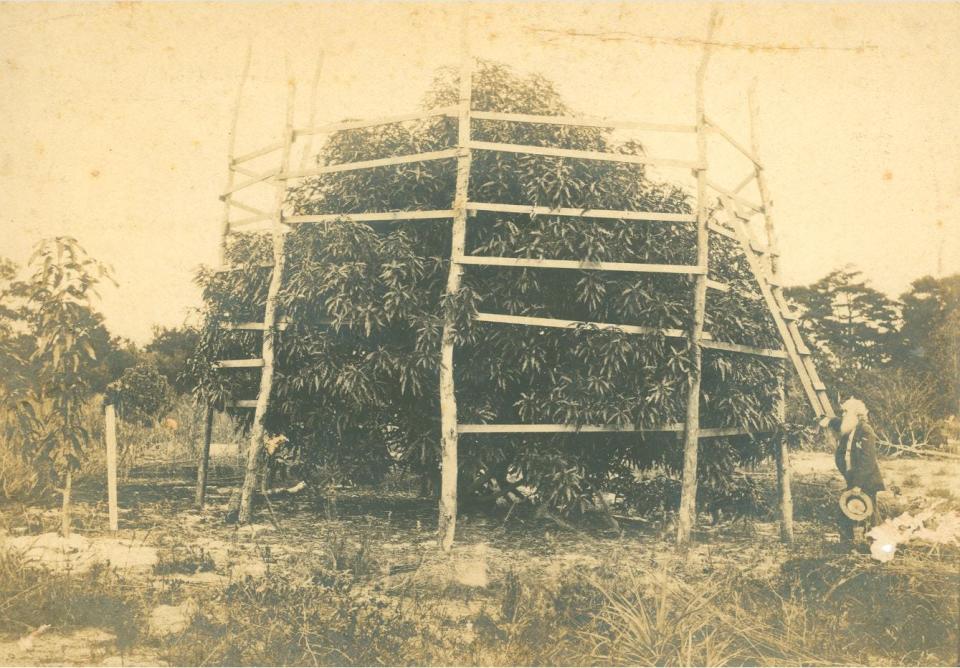
But a decade before West Palm Beach was established, Elbridge Gale took a boat south from the St. John’s River to the sparsely populated shores of Lake Worth looking for a warmer climate for health reasons, according to research done by Flick. Gale, who was probably around 60 at the time, was a reverend, a former agriculture professor at Kansas State University, a horticulturalist and a master carpenter.
A colleague sent Gale mango saplings from India by way of the U.S. Department of Agriculture’s Division of Pomology. Pomology is the science of growing fruit, and Gale, who studied tropical plants as well as other crops, believed mangos were well-suited for South Florida's warmer temperatures and sandy soil.
More: Downtown West Palm Beach's last single-family home; 'We're not going anywhere' owner says
The trees thrived, and Elbridge Gale and his wife, Elizabeth, were soon joined by their son and his wife, George and Mattie Gale. In 1892, the land was platted, and a community sprung forth. There was Gale and Otwell’s General Store, the Mangonia Hospital and boarding house, the Mangonia school, the Mangonia wharf and the Mangonia Boat Works at Gale’s point — a knuckle of land that stuck out into the lagoon until the shoreline was filled in for development.
“We came to a wilderness in 1893,” said Mangonia pioneer Lucretia Hannong in a 1945 Palm Beach Post story commemorating what was believed to be her 105th birthday. “(It was) a wild new land that was inhabited mostly by deer, turkeys, quail, fish and occasionally Seminole Indians on hunting trips.”
A few clapboard pioneer homes still exist in Northwood Shores in different states of renovation or disrepair, but the dates of some of their construction are muddled. Flick says the Henry Sanders House on 31st Street was built between 1895 and 1898. The Palm Beach County Property Appraiser lists its construction as 1925, but Flick said a fire destroyed the early property records and that he has tax maps that reflect the earlier construction date.
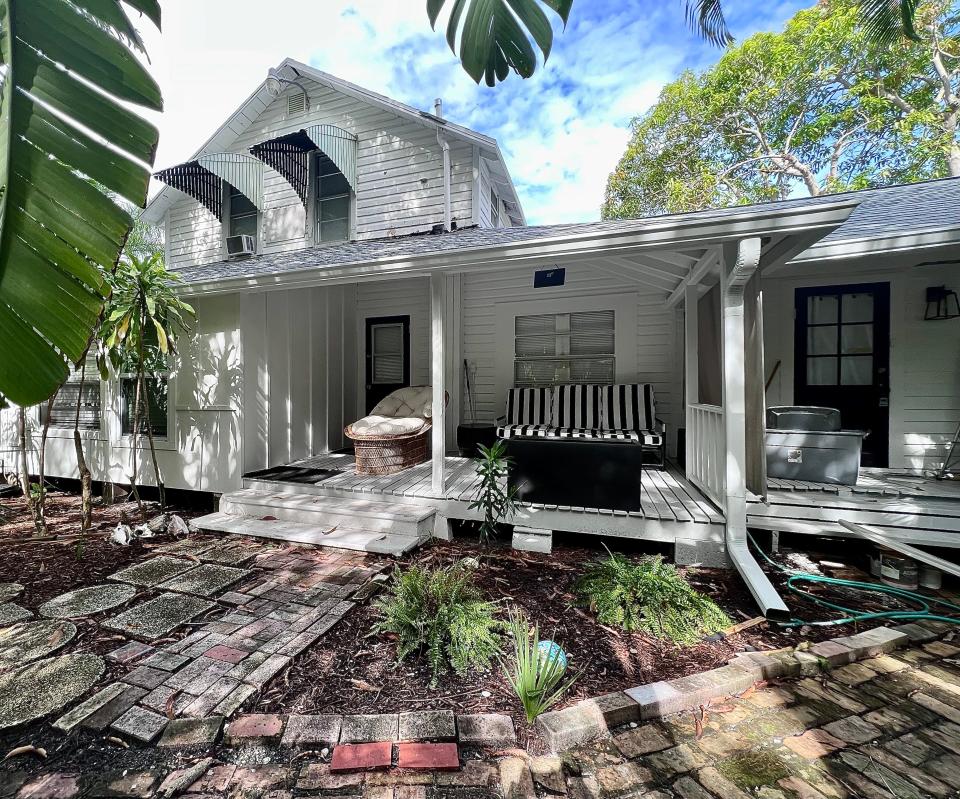
The Mangonia Boarding House, originally believed to be a hospital, was built in a Dutch gambrel style between 1895 and 1905, Flick said. It still sits at 239 31st Court. Near it, is the 1924 former Pillar of Fire Church, now a single-family home. And Lucretia Hannong's cabin built in 1893 is on part of a property on 33rd Street, Flick said.
“There are pioneer structures in the heart of old Mangonia, and we have Spanish mission style, and Moorish style, and mid-century modern and early ranch,” said Flick, who has been president of the Northwood Shores association for six years. “We have some of the most unique structures in the city.”
West Palm Beach's historic districts: Dictatorship or protector?
West Palm Beach has 18 historic districts that mostly date to the 1920s land boom, which was followed by a second post-World War II population surge in the 1950s. Homes must be at least 50 years old to be considered historic, and 50%, but preferably 80%, of homes in a community must be historic to be considered for historic district status. That means homes that were built prior to 1973 would likely be considered “contributing” structures to a district. Newer noncontributing homes have more leeway to make changes or be demolished.
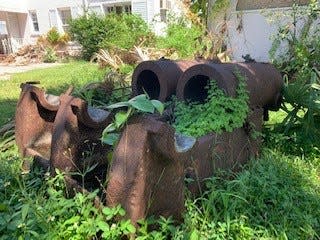
Communities without historic protections have experienced waves of knockdowns and new builds since the pandemic. Last year, Sunshine Park, a community south of downtown, voted to become a historic district in an effort to stem the construction of large modern homes that neighbors said didn’t fit the community. In the popular non-historic district south of Southern Boulevard, nicknamed SoSo, some long-time residents complain about the demolition of old homes and the construction of what they call "mausoleums" and "housequariums."
“The very quality and essence of why people want to live in a neighborhood gets destroyed,” said Bob Carr, director of the Davie-based Archaeology and Historical Conservancy, who conducted an archaeological dig at the Mangonia Boat Works in 2018. “These new faceless boxes are unappealing, unattractive and don’t contribute to a sense of place and community.”
Want to get The Dirt?
Stay up to date on South Florida's sizzling real estate market and sign up for The Dirt weekly newsletter, delivered every Tuesday! Exclusively for Palm Beach Post subscribers.
Diament disagrees. He owns five properties in Northwood Shores, including the lot where he’s building the three-story, modern home that he plans to live in. He said Northwood Shores was overlooked before the pandemic, but he always knew it was a special location with waterfront lots that offer a short trip by boat to the Atlantic Ocean through the Palm Beach Inlet, also known as the Lake Worth Inlet.
“This is the best place on the Eastern Seaboard as far as I’m concerned,” Diament said. “I believe what I’m doing here improves the community.”
Pandemic-triggered lust for waterfront real estate in Palm Beach County
And then there’s the question of what will happen to the community's waterfront, which has about 30 individual lots with single-family homes. To the north and the south, soaring apartments and condominiums are being built along the Lake Worth Lagoon as developers run out of land and go vertical.
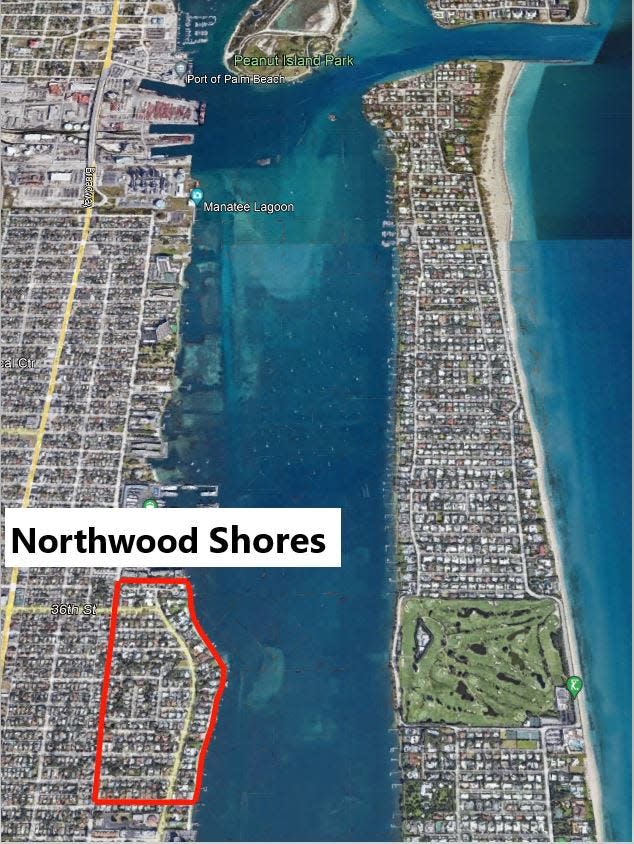
About 88% of the homes on the waterfront in Northwood Shores are younger than 50 years old, meaning they wouldn't be under historic preservation rules and can be more easily demolished or remodeled.
Lon Sabella, a Northwood Shores resident opposed to a historic district, said it’s a scare tactic to say the coastline could be developed with high rises.
“That would never happen here,” Sabella said. “The community would organize against it.”
More: Miami-light? West Palm Beach's waterfront draws new luxury high-rise towers
Sabella, who believes his property value will go down if a historic district is approved, said the community should wait a couple of years “to see what happens before we cave to the paranoia of possibly getting high rises.”
He’s also unhappy that an application for historic status was submitted to the city by the association — an action he feels wasn’t well-publicized.
The association board voted in April to apply for historic district status after multiple residents voiced concerns about people building “McMansions." The submission also followed two newsletters focused on historic district status, Flick said.
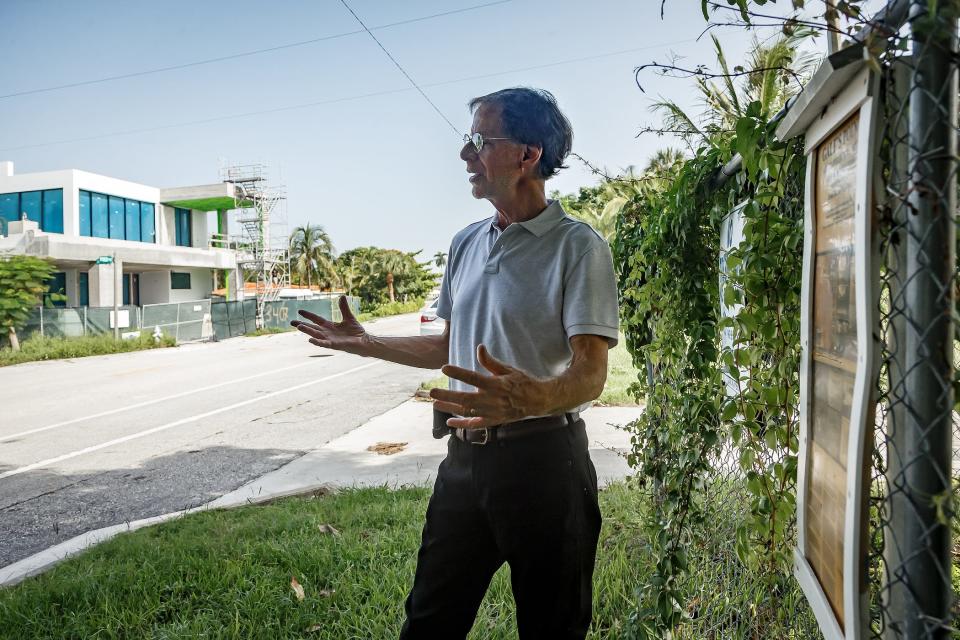
But Diament, who wasn't on the board at the time of the submission, said he was "blown away" and "blindsided" when he learned about the application and that it put a moratorium on demolition permits. Up to 10 demolition inquiries or requests were put in limbo by the application, Flick said.
Blickle, the association treasurer, said the association didn’t know the application would pause demolitions.
The association has since negotiated with the city to remove the moratorium, allowing for demolitions to continue while the application for historic status is considered.
“We have McMansion syndrome all over the place,” said Northwood Shores resident and architect Rafael Rodriguez, who supports the historic district but doesn’t want his home considered a contributing structure. “People are maxing out the properties, whereas, with a historic district, there are restrictions.”
Neighborhood association plans a poll and community meetings
To earn the historic designation, at least 51% of a neighborhood must approve it. It must also pass muster with the West Palm Beach Historic Preservation Board and the City Commission.
Although an application was submitted in May for Northwood Shores, it remains incomplete and the neighborhood association plans to do a public poll and hold two community meetings before moving forward. Those are scheduled in August and September.
Both Flick and Diament said they will live with whatever the community decides, and both believe the current sentiment leans in their favor.
Blickle said he’s “lukewarm” about becoming a historic district. He doesn’t want a tower on the waterfront, but he also doesn’t see the benefit of his 1957 home being designated historic.
“Over the past two years, this super rich guy bought up four houses at the end of my street and I have no idea what he will do with them,” Blickle said. “At the same time, that’s life in the big city.”
Kimberly Miller is a veteran journalist for The Palm Beach Post, part of the USA Today Network of Florida. She covers real estate and how growth affects South Florida's environment. Subscribe to The Dirt for a weekly real estate roundup. If you have news tips, please send them to kmiller@pbpost.com. Help support our local journalism, subscribe today.
This article originally appeared on Palm Beach Post: West Palm Beach neighborhood at odds over historic district application

